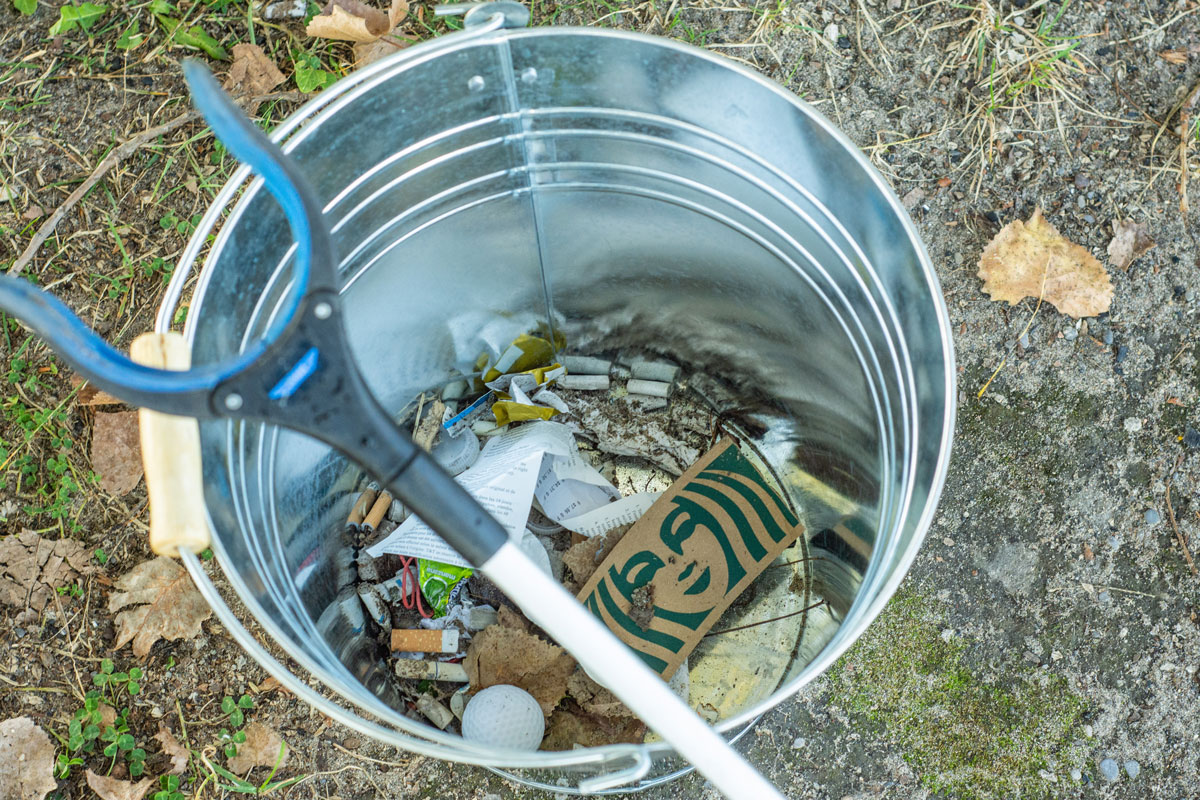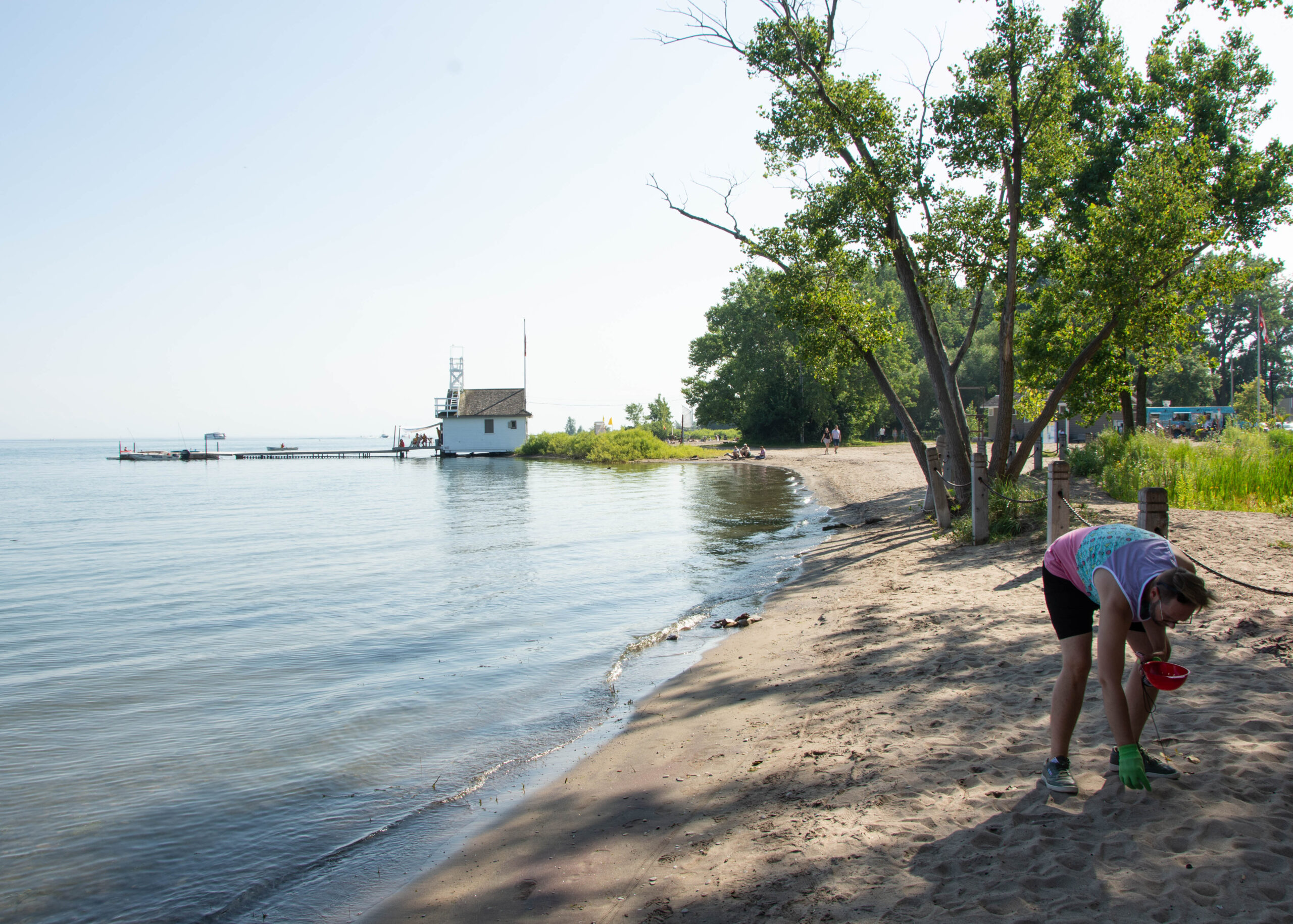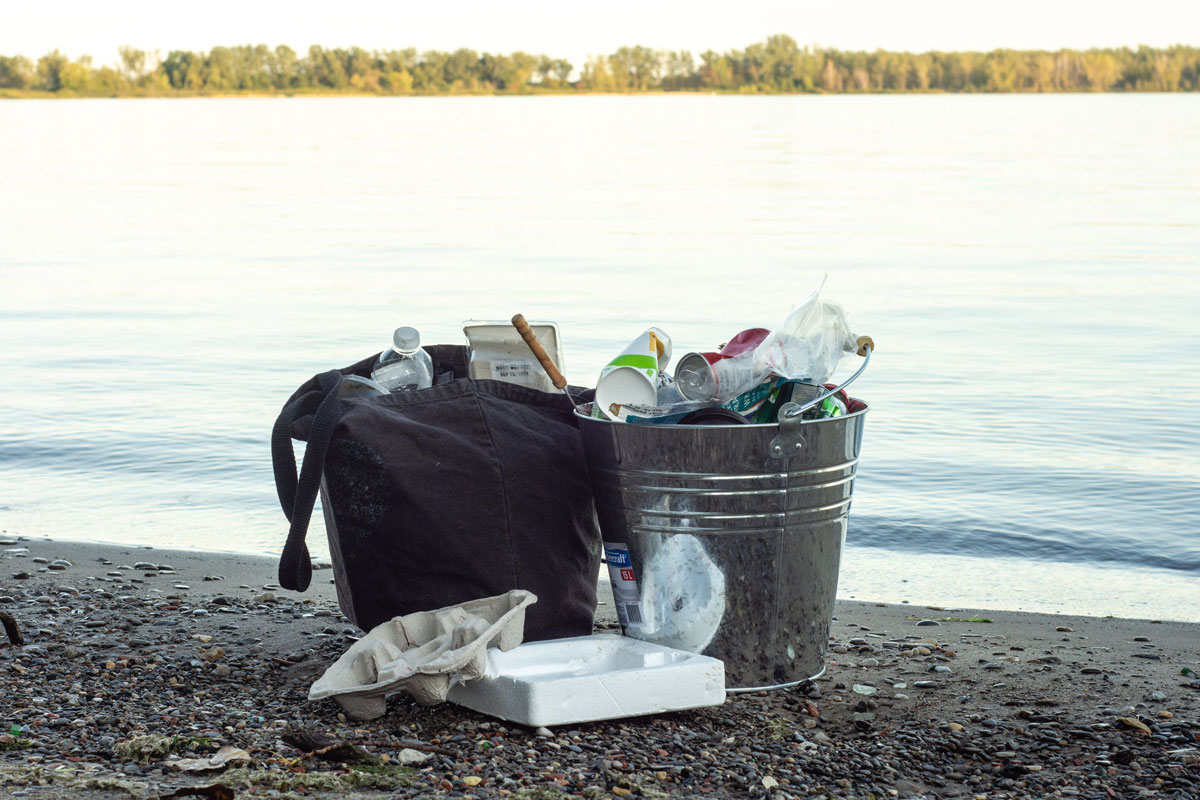A view of the shoreline at Cherry Beach. A volunteer from a past cleanup bends down to pick up litter on the beach. Photo by Chelsea Brash.
On September 21st, 20 million people across 180 countries celebrated World Cleanup Day. Litter cleanups are nothing new to our non-profit, A Greener Future. Each year, we do 100 cleanups along the shores of Lake Ontario. We collect data on everything we find. This way, we get a clearer idea of what the “problem” items are, and can come up with informed solutions to reduce waste. To date, we have picked up more than 1.4 million pieces of litter.
For World Cleanup Day, we took our data collection a step further and conducted a Brand Audit, on behalf of Break Free From Plastic. This way, we could see exactly which companies were responsible for producing some of the litter that is ending up on our shoreline.

A litter picker rests on top of a bucket used to collect litter. In the bucket, a branded Starbucks coffee sleeve is visible. Photo by Chelsea Brash.
With a small but mighty group of nine volunteers, we cleaned up Cherry Beach in Toronto, Ontario. Cherry Beach is a popular area, where people go to swim, have summer barbeques, walk along the lakefront, and bring their dogs to the off-leash park. The beach also hosts weekly parties in the summer. It’s a fun place for anyone to enjoy, but as you might imagine, it also attracts a lot of litter.
We split our group into two and went in different directions. Some of us went and checked closer to where the waves were coming in, to see if any small pieces of plastic or styrofoam had washed up. Others went to the picnic areas, to see if any garbage had been left behind.
Two volunteers found a large pile of takeout containers, plastic bottles, and grocery bags that had likely been left behind from a picnic.

A volunteer grabs a plastic bottle from a pile of litter using a litter picker. Photo by Chelsea Brash.
In total, we picked up 1,794 pieces of litter in an hour. It’s pretty astonishing because at first glance, one of our volunteers mentioned how clean the beach looked. She was right - it did look clean, until we started looking closer.
When we collected the data, we counted the totals for each item found, and took note of every branded item. We categorized our data to show the top ten brands we found, as well as the top 10 items we found (with foam pieces and hygiene items tied for 10th place).
The most commonly found item at this cleanup was cigarette butts. Belmont was the most commonly found brand, followed by Pall Mall, another cigarette company. We also found several branded beer bottle caps, as well as coffee cups and straws from fast food giants like McDonald's and Tim Hortons.
In our experience, we’ve found that when people see recognizable brands littering the natural spaces they love, it forces them to think about their own consumption habits. At the end of each cleanup, we regroup with volunteers and discuss ways the litter we found could have been properly disposed of, or how it could have been avoided in the first place.
For example, now that we know that cigarette butts are a big problem at Cherry Beach, we could suggest implementing more ashtrays, or that people carry around pocket ashtrays with them instead of throwing their butts on the ground. We also noticed litter from fast food restaurants. Customers could bring their own reusable coffee mug to their favourite takeout place, or could bring food from home to the beach in reusable containers to avoid using any disposable items in the first place.
Overall, data is an important tool we use when we teach people about waste in Lake Ontario. By being able to show exactly what items are ending up in the lake, and which companies are responsible for producing it, we will be better able to come up with solutions to keep litter out of the natural environment.
Chelsea Brash is the Communications Coordinator for A Greener Future, and is a Toronto-based Creative who specializes in creating visual content for environmental initiatives.





